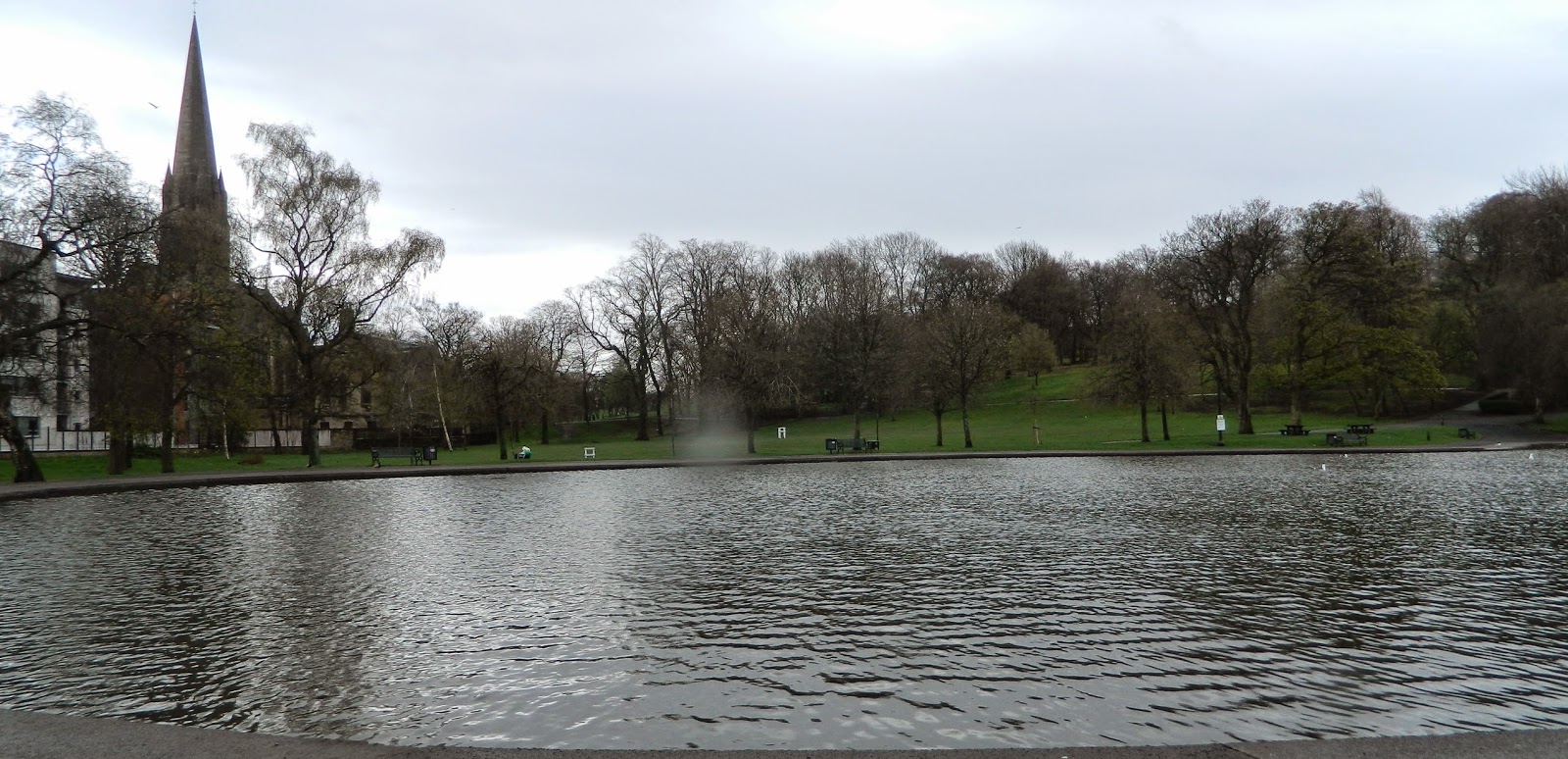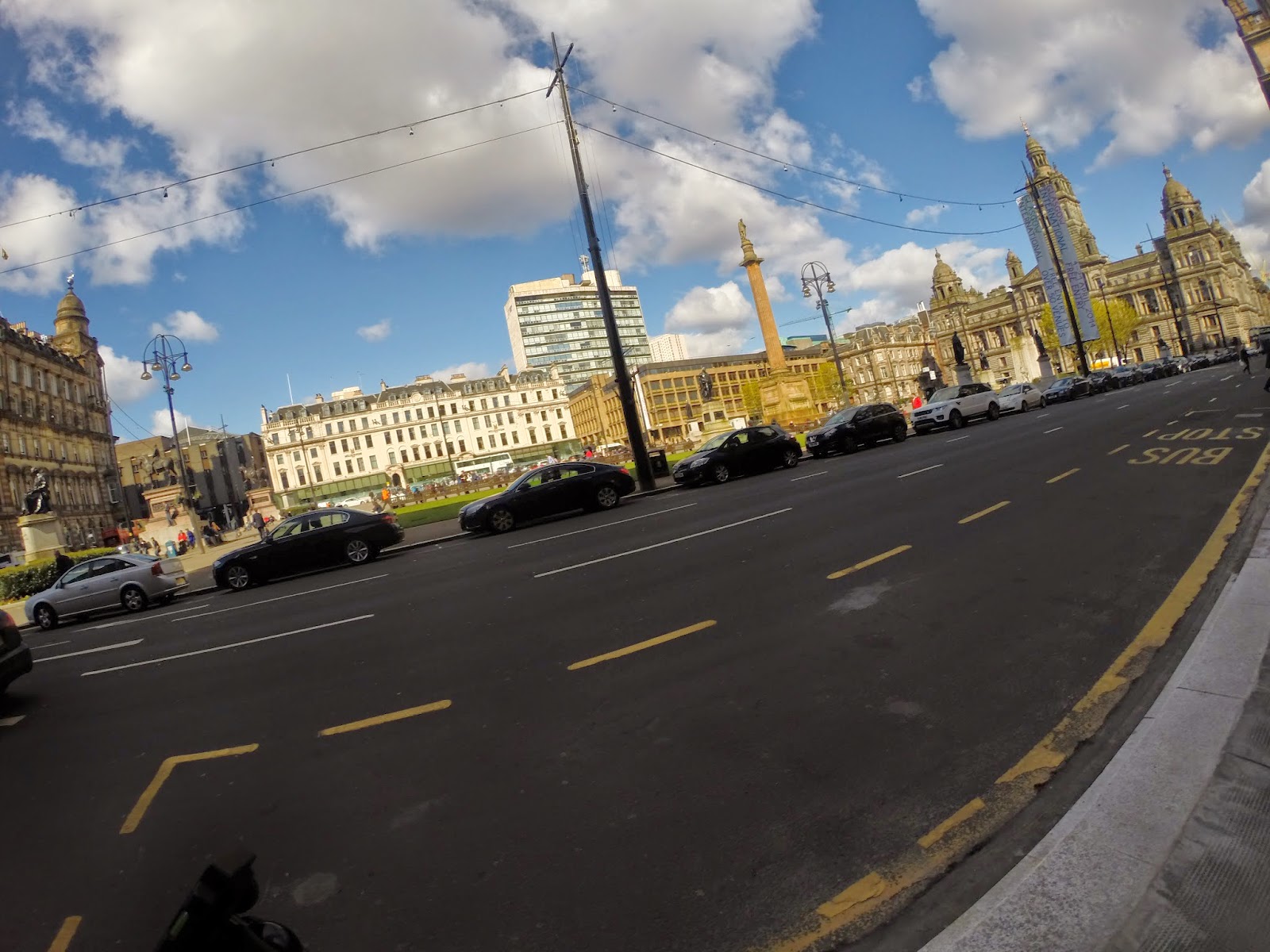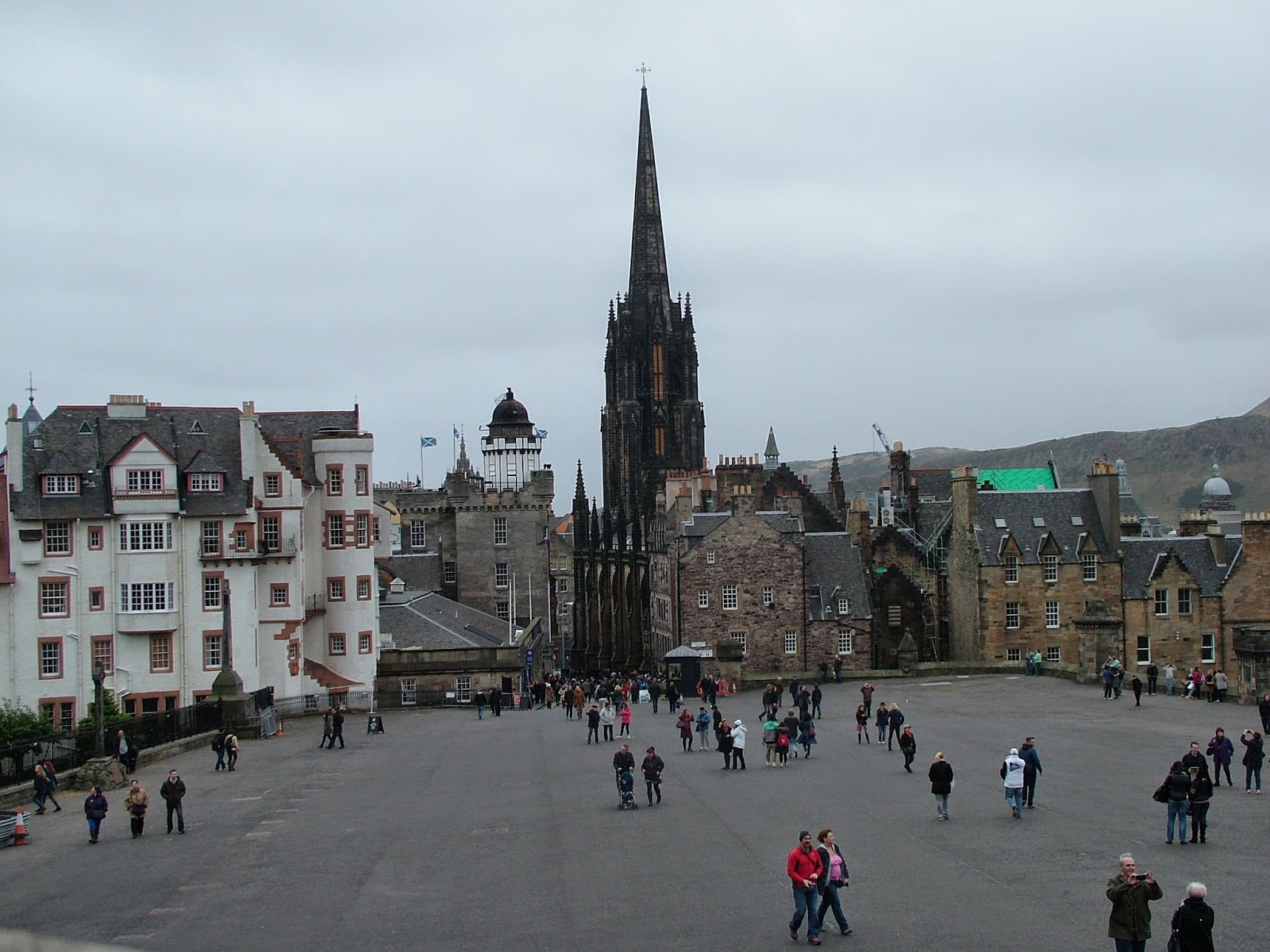
CHAPPIDI ABHIRATH REDDY,
C/O COL GKS REDDY,
Visit to Glasgow
Glasgow (/ˈɡlɑːzɡoʊ, ˈɡlæz-/; Scots: Glesca; Scottish Gaelic: Glaschu) is the largest city in Scotland, and the 4th largest in the United Kingdom, and, as of the 2011 census, the Scottish city with the highest population density with 3,395 people per square kilometre. It is situated on the River Clyde in the country's West Central Lowlands. Inhabitants of the city are referred to as Glaswegians.
Glasgow grew from a small rural settlement on the River Clyde to become one of the largest seaports in Britain. Expanding from the medieval bishopric and royal burgh, and the later establishment of the University of Glasgow in the 15th century, it became a major centre of the Scottish Enlightenment in the 18th century. From the 18th century the city also grew as one of Great Britain's main hubs of transatlantic trade with North America and the West Indies.
With the onset of the Industrial Revolution, the population and economy of Glasgow and the surrounding region expanded rapidly to become one of the world's pre-eminent centres of chemicals, textiles and engineering; most notably in the shipbuilding and marine engineering industry, which produced many innovative and famous vessels. Glasgow is known as the "Second City of the British Empire" for much of the Victorian era and Edwardian period. Today it is one of Europe's top ten financial centres and is home to many of Scotland's leading businesses. Glasgow is also ranked as the 57th most liveable city in the world.
Dowanvale Free Church, Glasgow
The memorial-stone of Dowanvale Free Church, now in course of erection at Partick, near Glasgow, was laid on Saturday afternoon, 15 Oct 1880. It is Early English Gothic in style, and is being built of square dressed rubble. On the ground floor are planned a suite of rooms 16ft. in height, including a hall seating 300 persons, session-house for 100 persons, vestry, ladies' room, and lavatories. Over these rooms is erected the church proper, which will seat 500 on the area, and 300 more on a gallery carried round three sides. Mr. Alexander Petro (Petrie)(sic) is the architect.
We started from Edinburgh, early in the morning on 13 Oct 2013, as we planned to reach Oban by evening, after visiting Glasgow and Loch Lomond en-route. We reached Glasgow by about 0800 h and had difficulty in finding suitable parking for the car. Finally found parking at Patrick, near Dowanvale Free Church. As we had limited time, we started from Dowavale church, walked along Argyle Street, through the University Gardens, University and back to the car park.
Anderson College, Glasgow
Anderson's College
succeeded Anderson's University following the passing, in 1877, of the
Anderson's College (Glasgow) Act (40 Vic., c.xii), entitled 'An Act for
incorporating the Trustees of the Educational Institution in Glasgow founded
under the will of Professor John Anderson; for altering the name of that
Institution and the powers and duties of the Trustees and Managers thereof; and
for other purposes'. Then, in the 1880s, under the Educational Endowments
(Scotland) Act 1884, the College was split in two. Its medical school
(established in 1800) became a separate and distinct institution, incorporated
in 1887, as Anderson's College Medical School (later The Anderson College of
Medicine, Glasgow).
A view of Anderson College Building
Kelvin Hall, Glasgow
The Kelvin Hall in Glasgow, Scotland, is a mixed-use arts and sports venue that opened as an exhibition centre in 1927. It has been a music hall, indoor arena and barrage balloon factory, and is currently home to the Kelvin Hall International Sports Arena and from 1987 to 2010, Glasgow's Museum of Transport. It is protected as a category B listed building.
The Kelvin Hall stands on the bank of the River Kelvin opposite the Kelvingrove Art Gallery and Museum in the West End of Glasgow. The present building dates from 1927. The previous building on the site was originally built as the Industrial Hall, a temporary wooden structure for the 1901 Glasgow International Exhibition at Kelvingrove Park, which burnt down in 1925. The new Kelvin Hall was designed to house large scale exhibitions, but during the Second World War was used to produce barrage and convoy balloons.
Over the subsequent decades it hosted many exhibitions, including the Industrial exhibitions of the Festival of Britain in 1951 and has also hosted motor shows, modern homes exhibitions, Boys Brigade and Rangers Supporter Club rallies, world championship boxing, rock concerts, several seasons of RSNO Proms and the Kelvin Hall Circus. Lions, tigers and African elephants all thrilled Glaswegians for years and many to this day can remember that distinctive animal smell when walking round the carnival after their circus visit.
A side view of Central Portion of the Kelvin Hall, from across the Road
A closer Front view of the central portion of the Hall
A Full corner view of Calvin Hall from near Kelvin Gallery
Kelvingrove Art Gallery and Museum
The Kelvingrove Art Gallery and Museum is a museum and art gallery in Glasgow, Scotland. The building houses one of Europe's great civic art collections. Since its 2003–06 refurbishment, the museum has been the most popular free-to-enter visitor attraction in Scotland, and the most visited museum in the United Kingdom outside London.
The gallery is located on Argyle Street, in the West End of the city, on the banks of the River Kelvin (opposite the architecturally similar Kelvin Hall, which was built in matching style in the 1920s, after the previous hall had been destroyed by fire). It is adjacent to Kelvingrove Park and is situated near the main campus of the University of Glasgow on Gilmore hill.
Kelvingrove Art Gallery and Museum located across the road from Kelvin Hall
A view of Main Entrance of the Museum
A closer view of Main Entry to the Museum
Glasgow University
The University of Glasgow (Scottish Gaelic: Oilthigh Ghlaschu, Latin: Universitas Glasguensis) is the fourth-oldest university in the English-speaking world and one of Scotland's four ancient universities. The university was founded in 1451 and is often ranked in the world's top 100 universities in tables compiled by various bodies. In 2013, Glasgow moved to its highest ever position, placing 51st in the world and 9th in the UK in the QS World University Rankings.
Originally located in the city's High Street, since 1870 the main University campus has been located at Gilmorehill in the West End of the city. Additionally, a number of university buildings are located elsewhere, such as the University Marine Biological Station Millport on the Island of Cumbrae in the Firth of Clyde and the Crichton Campus in Dumfries.
Entry Gate to the Glasgow University Gardens, from the Argyle Street side
A view of the University Gardens from the Argyle Street, with
the University Campus in the Background
Another view of the University Gardens
A closer Rear view of the University Campus from the University Gardens
A full view of the University Administrative Building
A view of the University Gardens
A walk through the University Gardens
Side Entry Gate into the University Campus on Gillmore Hill
A view of the University Campus
Another view of the University Campus
Main Entry Gate into the University Campus
Glasgow City Free Church
Alexander Thomson's masterpiece, a distinctive Victorian Presbyterian church of 1859, designed in the style of a classical temple on a plinth, and embellished by a unique Thomsonian combination of Egyptian, Indian and Assyrian influences. From the outside the building appears to be a temple built on top of a large plinth; in fact, the plinth is the main body of the church and the temple the clerestory and roof. The tower grows ever more elaborate towards its top, changing from the Greek Revival to an eclectic mixture of styles, almost becoming an Indian temple. The lofty church interior is wonderfully rich and colourful, extraordinarily flamboyant for a Presbyterian place of worship. The eye is drawn to the magnificent ensemble of pulpit and organ case, with sloping door cases adding a touch of the exotic. Cast-iron columns with Egyptian inspired plant motifs in the capitals support the gallery. The pews are superb examples of the craft of woodworkers, curving so all the congregation can see and hear. This, the only one of Alexander ‘Greek’ Thomson's churches to survive intact is very precious and of international importance. Owned by Glasgow City Council.
A view of the Free Church
Queens Park, Glasgow
Situated on the south side of the city of Glasgow, in Scotland, Queen's Park (Pàirc na Banrìghinn in Gaelic, Queen's Pairk in Scots) is 60 hectares (150 acres) in area and lies about 4 miles (6.4 km) south of the city centre. The name can refer both to the park itself, the adjacent residential district, or the football team Queen's Park F.C.
The park was acquired in 1857 and was designed by the world renowned Sir Joseph Paxton, also responsible for noted public parks in London, Liverpool, Birkenhead and the grounds of the Spa Buildings at Scarborough. The park was dedicated to the memory of Mary, Queen of Scots and not Queen Victoria, a common misconception given the proximity to Victoria Road and that the park was created during her reign.
A view of Queens Park with the Park Baptist church in the Background
A closer view of the Church
A view of Queens Park Lake
A view of the City Landscape from the Park Highground
A closer view of the City Landscape from the Park
Another view of the City Landscape from the Park
George Square, Glasgow
George Square is the principal civic square in the city of Glasgow, Scotland. It is named after King George III. Laid out in 1781, George Square is today home to the headquarters of Glasgow City Council, and boasts an important collection of statues and monuments, including those dedicated to Robert Burns, James Watt, Sir Robert Peel and Sir Walter Scott. It is generally regarded as the de facto centre of the city, although Blythswood Square (1 km to the west) is the true geographical centre of the city, whilst all distances are measured from nearby Glasgow Cross.
A view of George Square, Glasgow
Another view of George Square
A closer view of George Square
Botanical Gardens, Glasgow
Glasgow Botanic Gardens is an Arboretum and public park located in the West End of Glasgow, Scotland. It features several glasshouses, the most notable of which is the Kibble Palace. The gardens were created in 1817, and run by the Royal Botanic Institution of Glasgow (founded by Thomas Hopkirk of Dalbeth), and were intended to supply the University of Glasgow. William Hooker was regius professor of botany at Glasgow University, and contributed to the development of the Botanic Gardens before his appointment to the directorship of Kew Gardens in London. The gardens were originally used for concerts and other events, and in 1891 the gardens were incorporated into the Parks and Gardens of the City of Glasgow.
The Board showing the Layout of the Botanical Gardens
The Glass Dome of the Botanical Gardens
Another External view of the Botanical Gardens
A view of the Entry to the Botanical Gardens
Another view of the Entry
An Interior view of the Botanical Gardens
A Bed of Tulips, Just Outside the Entry to the Botanical Gardens
Glasgow Central Railway Station
Glasgow Central (Scottish Gaelic: Glaschu Mheadhain, Scots: Glesga Central) is the larger of the two present main-line railwayterminals in Glasgow, the largest city in Scotland. The station was opened by the Caledonian Railway on 31 July 1879 and is currently one of 19 UK stations managed by Network Rail. It is the northern terminus of the West Coast Main Line.
The station serves all of the Greater Glasgow conurbation's southern suburbs and towns, and the Ayrshire and Clyde coasts, and is the terminus for all inter-city services between Glasgow and destinations in England. There is also a limited service to Edinburghalthough the city's second mainline terminus, Glasgow Queen Street, is the principal station for trains to Edinburgh.
An Inner view of Glasgow Central Railway Station
A view of the Platforms in the Central Station
Another view of the Central Railway station
Note:- The information about the places visited has been Extracted from Wikipedia The Free Encyclopedia.


















































































